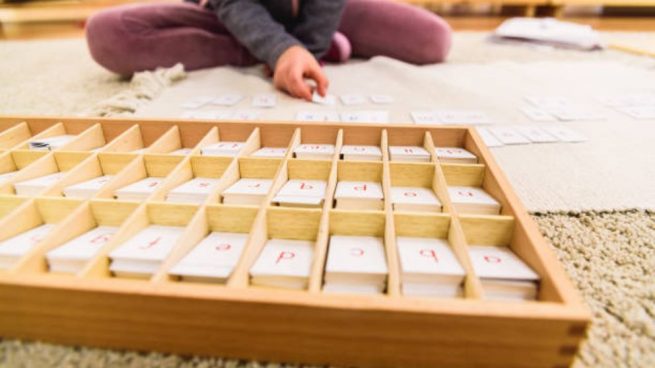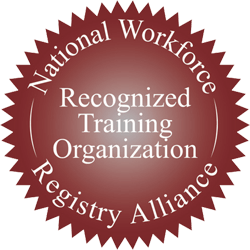Jan Katzen, AMI, CFP, CN, who serves as the Instructional Guide of the professional development course Nutrition is Fundamental to Learning, discusses her newest children’s book, Humdrum Hannah Was Eating Junk, available now.
What inspired you to write the book Humdrum Hannah was Eating Junk? 25 years ago I was lying on the beach in Rocky Point, Mexico with a notebook and pencil, enveloped in sand and childhood memories of food, isolation and despair – a byproduct of my struggles with sugar and overeating. Humdrum Hannah was Eating Junk arrived that day with a delightful spin on the memory – HUMOR! I had big shoes to fill as the narrator and main character however, and when silliness took over, there was no turning back. I was also writing other kid’s stories, “Little Wind,” a story about family communication with a Native American twist, and “If My Arms Were Two Miles Long I’d Give You A Hug” – an over-the-top silly story about two best friends separated by a family move. All of my stories sat in my file cabinet collecting dust, however. Fast forward to 2015. I remembered that I had written “Humdrum Hannah Was Eating Junk” years ago and at that time, as a nutritional therapist with years of scientific training and experience, I thought, ‘wouldn’t it be fun to revisit the story?’ I updated it and sent it off to my friend in the UK who generously worked on grammatical and content issues. He also surprised me with an audio recording of the text! That was the birth of the audio book.
What will readers find in the book? Endearing vita-GEMS (healthy) and vita-GERMS” (not-so-healthy) food characters call out to Hannah from the refrigerator each day at around 4:00 PM. They argue among themselves to be chosen by her, with silly dialogue and sound effects. The reader can download the audio book to listen in and will fall in love with the characters – including ice-cream and beans (warning: children’s graphic humor!). A downloadable coloring book is an added bonus so children can color their way to healthier food choices. The view inside of Hannah’s intestines as the healthy and not-so-healthy food continue their battle is compelling. Parents get a break from “nagging” as their children visualize and learn how food affects their digestion, energy levels, behavior and mood.
Your book description states that ‘most children’s nutritional education books are boring…not anymore.’ What makes your book stand out? Children follow Hannah on her journey from humdrum to happy as the character “baby broccoli” rescues her from getting into trouble and she saves him from the trash can. Nutrition education is woven throughout the story, including a child-friendly glossary for big words like PANK-ree-us, dia-BEAT-eese, and leg-YOOMS. Healthy, fun, family recipes, health tips from Hannah and ‘Glad-I-Ate-it’ stickers are included, making a fun addition to any Montessori or traditional classroom. The audio book contains real sounds to identify such as the refrigerator opening, walking down steps, cheering on the playground, a heart beating, and bodily sounds such as burps and farts (a grace and courtesy lesson to be had for all).
Most people know that ‘junk food’ isn’t good for us. What would you say, though, that most people don’t yet know about food and nutrition? This is why it is so important for children to learn about food and physical and mental health at an early age. In fact, it’s so important that Hannah wrote her own section on health tips for home and school. For example, “bright vitaGERM colors in junk food are made from bad stuff like coal that turn your tongue and fingers red, blue, yellow, or orange. They might even get into your brain and make you hyper. It’s best to keep these fake colors in your crayon box.”
What are some things that you hope for the food ‘industry?’ For school lunch programs? Hannah says it best! “Now that you know so much about healthy eating, you might see certain foods served at school that are full of vitaGERMS. Don’t eat them. Help make your own breakfast, lunch, and snack and take it to school.”
But if you do eat breakfast and lunch at school, “bring a friend or grown-up with you and politely ask your principal to add more vitaGEMS (protein, complex carbs, good fats) to the school menu.”
Jan Katzen, AMI, CFP, CN, has studied nutrition and health under the guidance of professor Michael Crawford, expert in brain chemistry and human nutrition. She interned with Nim Barnes, founder of Foresight Preconceptual Care (Bognor Regis, England). She is a former AMI (Association Montessori lnternationale) educator and publishes scientific articles and books on nutrition with a focus on preconception health, brain and child development. Jan has written many children’s books including her newly released Humdrum Hannah Was Eating Junk. She has served on advisory boards of The McGarrison Society, The Mother and Child Foundation (UK), The Montessori Education for Autism Foundation (UK), and Epap nutritionals in South Africa. Jan maintains a clinical and private practice at Melmed Center in Scottsdale, Arizona. She specializes in nutritional evaluation and sustainable food plans for children with neurodevelopmental, learning, behavioral, and emotional challenges. She also consults with adolescents (anxiety, depression), and adults. Telephone or Skype consultations available.
Jan is also the video instructor for the professional development course Nutrition is Fundamental to Learning, given by The Center for Guided Montessori Studies teacher training program and teaches a 4-week Nutrition is Fundamental to Learning professional development course for educators and parents. Jan loves guiding Montessori educators and provides all the tools necessary to amp up the nutrient content of foods served at school and nutrient dense breakfast and lunch ideas and educational hand-outs for parents so students come to school well nourished, happy, and ready to learn. Jan works individually with her adult learners, including continual online communication and weekly Zoom Chats. Jan’s next course begins March 16th, 2020.



